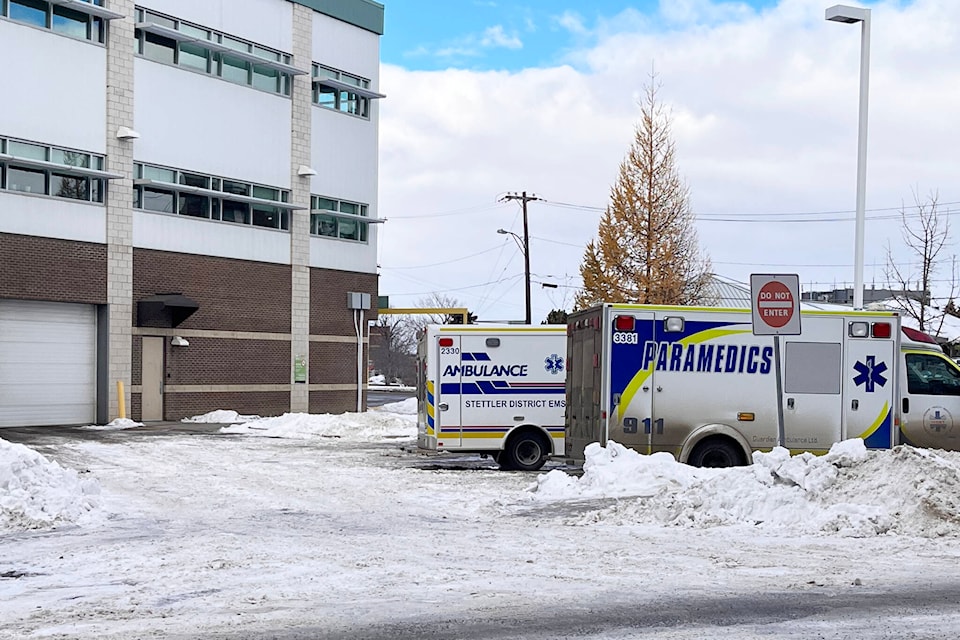Red Deer’s chief of emergency services will be digging into a review that found Alberta’s controversial centralized EMS dispatch does not affect wait times for ambulances.
According to the PricewaterhouseCoopers report, increased demands on EMS services are the leading cause behind longer wait times, which have at times put pressure on the availability of ambulances.
Red Deer, Calgary, Lethbridge and the regional Municipality of Wood Buffalo have been fighting to restore local ambulance dispatching in their communities citing response times.
Red Deer Emergency Services chief Ken McMullen said eight concerns about centralization were identified in the report. Five of those concerns were substantiated by the review, while three were ruled unsubstantiated.
“My simple math shows over 50 per cent of the concerns were substantiated. I have to read as to why the author feels the EMS dispatch process has not deteriorated as a result of the centralization,” said McMullen, who added he will be studying the 185-page report released by the province on Monday.
Related:
Child brought to Red Deer hospital via fire truck due to ambulance not being available
The independent review contains 45 recommendations which the province is committed to implementing while continuing with the central dispatch system and addressing municipalities concerns.
The province has also accepted all recommendations from the Alberta Emergency Medical Services Provincial Advisory Committee report. Efforts to lower EMS response times include:
• Developing guidelines to move less urgent ambulance patients into emergency department waiting rooms.
• Adding 10 more ambulances in both Calgary and Edmonton during peak hours (roll out expected in the spring) to free up about 44,000 non-emergency transfers per year. These ambulances are on top of the 19 that were added in both cities during peak hours in 2022.
• Contracting services to provide non-emergency transfers between facilities in Edmonton and Calgary.
• A pilot project to empower paramedics to assess a patient’s condition on scene and decide whether they need to be taken to emergency by ambulance.
“Our Health Care Action Plan goals come directly from our frontline workers and EMS partners who engaged with the Alberta EMS advisory committee, and I am pleased we have already began putting recommendations in place to improve response times and ease the pressure on EMS staff,” said RJ Sigurdson, parliamentary secretary for EMS reforms and advisory committee co-chair, in a statement.
Related:
Ambulance response times too long but progress being made: health officials
McMullen, who was a member of the advisory committee, said Red Deer fire-medics have already been moving less urgent ambulance patients into the waiting room, but acknowledging this practice in the report is important.
He said having more ambulances in Calgary and Edmonton, and contracting out non-emergency transfers in those cities, may also help Red Deer depending on the results.
“We’re hoping that the additional resources in Calgary and Edmonton will eliminate, or certainly significantly reduce, the amount of time our resources are caught on a call while we’re simply trying to return to our own community.
“We see a great deal of our crews tied up with transfers and if there is a new, improved, more effective way of doing those transfers, we as Red Deer will benefit from that,” McMullen said.
Last January the province launched the advisory committee to provide immediate and long-term recommendations for a new provincial EMS service plan.
NDP health critic David Shepherd said it’s very frustrating to see a task force take a year to come up with recommendations that include forming another task force, this time for emergency departments.
“I think all Albertans are well aware there’s a crisis in our emergency rooms and that this problem is part of what is driving many of the problems for paramedics,” Shepherd said.
He was also concerned about contracting out inter-facility transfers.
“We know this government often has a predilection for looking for opportunities to privatize the delivery of services. We have not yet seen that necessarily yields better results for Albertans.”
szielinski@reddeeradvocate.com
Like us on Facebook and follow us on Twitter
